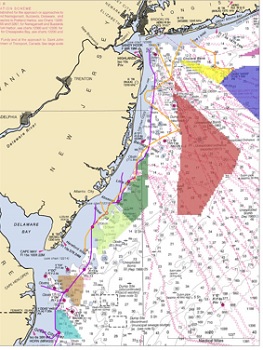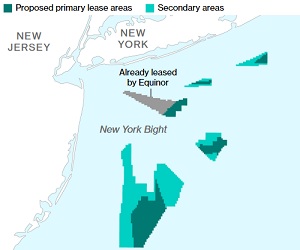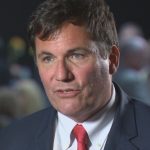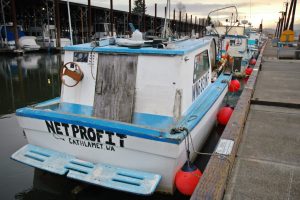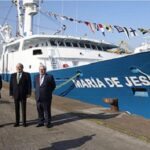Tag Archives: BOEM
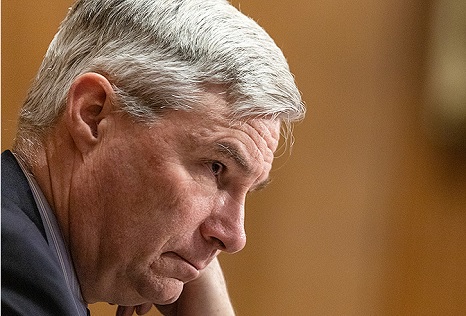
Top climate hawk bashes first big offshore wind project. Sheldon??
For the past seven years, Sen. Sheldon Whitehouse has given a weekly address about the dangers of climate change. Increasingly, some greens wonder if he is full of hot air. The Rhode Island Democrat, one of the Senate’s top climate hawks, has emerged as a leading critic of Vineyard Wind, an 84-turbine offshore wind project proposed in federal waters 15 miles south of Martha’s Vineyard.,,, Whitehouse’s statements echo concerns of Rhode Island squid fishermen, who have emerged as leading opponents of Vineyard Wind. >click to read< 12:21
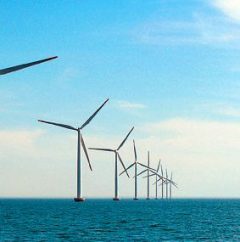
Trump aide offers no guidance on Vineyard Wind
The Bureau of Ocean Energy Management put the offshore wind farm on hold indefinitely in early August while it tries to gain a better understanding of the cumulative impact of the many East Coast wind farm projects currently in the pipeline. With the project in danger of being canceled if the delay lasts too long, James Bennett, the renewable energy program manager at the Bureau of Ocean Energy Management, gave no indication of when the agency’s review will be completed. >click to read< 08:33
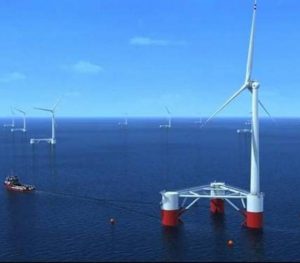
Offshore Wind Energy Looks More Promising for Oregon
A stretch of the Pacific Ocean off the coast between Humboldt County, California, and Coos Bay, Oregon, has some of the highest wind power generating potential in the country. The area north of the California border looks particularly promising to green energy advocates because the region already has a functioning electric grid. But a past attempt to install five floating turbines off Coos Bay faced rising costs and opposition from the fishing industry, and was eventually moved to California when no one could be found to buy the high-priced power the facility planned to generate. >click to read< 11:24
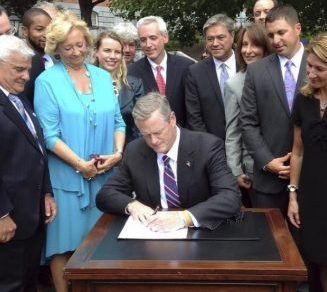
“We don’t even know what the rules of the road are,” Fishermen unsatisfied with wind turbine plans
Rhode Island commercial fishermen sat down a year ago with offshore wind developers, they say they made it clear that for the sake of navigational safety the minimum spacing of any turbines installed in ocean waters needs to be at least one nautical mile in every direction.,,,“It’s the exact thing we’ve been saying for years,” said Lanny Dellinger, the Newport lobsterman who chairs the board. “That’s the minimal ask for us.”,,,In Rhode Island, representatives of Ørsted were conciliatory and the meeting was generally cordial, but at the heart of the discussions over the South Fork project is a larger clash between two industries, one legacy and the other nascent,,, >click to read< 07:46

Vineyard Wind Gasping for Air Until 2020
The Bureau of Ocean Energy Management has delayed the construction off our coast of Vineyard Wind, the country’s first commercial scale offshore wind farm, until 2020. I believe President Trump is squarely behind all the concerns of the commercial fishing industry that haven’t been adequately resolved by the wind farm folks, and if you don’t get the problems addressed now, as Carlos Santana would say, “you can forget about it.” Because five other offshore wind projects are planned adjacent to the site. Phil Paleologos >click to read< 19:58

Wind turbines and fishing nets fight for offshore space
Vineyard Wind,,, In 2010, BOEM launched an initiative dubbed “Smart from the Start,” which aimed to steer wind development away from prime fishing areas, shipping lanes and sensitive marine habitat prior to leasing.,,, New Bedford Mayor Jon Mitchell. “There are some squid fishermen, mostly from Rhode Island, and some lobstermen who fish in there, but the value of the area’s annual fish landings is modest, especially compared to the lease areas proposed off of New York.”,,, Also important: Few members of New Bedford’s scallop fleet fish in the waters off Massachusetts.,,,But if scallopers can live with offshore wind development off Massachusetts, others are vehemently opposed. Rhode Island fishermen trawl for squid in the area. >click to read< 09:19

Opinion: Responsible Offshore Development Alliance Statement on Vineyard Wind Federal Review Process
In light of the recent decision by the Bureau of Ocean Energy Management (BOEM) to perform a cumulative impacts analysis regarding the proposed Vineyard Wind project, and the recently released communications between that agency and the National Marine Fisheries Service (NMFS), RODA would like to clarify certain statements and representations. >click to read< 08:27
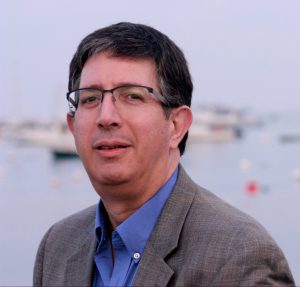
Exclusive: First big U.S. offshore wind project hits snag due to fishing-industry concerns
Vineyard Wind, a joint venture between Copenhagen Infrastructure Partners and Avangrid Inc (AGR.N), was scheduled to begin,,, Documents seen by Reuters, which have not previously been made public, show the National Oceanic and Atmospheric Administration’s (NOAA) National Marine Fisheries Service (NMFS) triggered the delays by declining to sign off on the project’s design, as proposed by the Bureau of Ocean Energy Management (BOEM), the lead agency on offshore wind projects.,,, In an April 16 letter to BOEM, Michael Pentony, regional administrator for NOAA Fisheries’ Greater Atlantic office, said his agency could not support the environmental permit for Vineyard Wind because the project failed to fully address the concerns of the fishing industry.,,, >click to read< 08:26

Baker, Vineyard Wind mum on Feds’ project guidance – Why Vineyard Wind should’nt proceed without answers
The federal government has offered new “guidance” on the Vineyard Wind offshore wind project, Gov. Charlie Baker said, but neither the governor’s team nor project officials will talk about it. The Baker administration chose Vineyard Wind in May 2018 for the state’s first commercial-scale offshore wind effort under a 2016 clean energy law and state officials are counting on the project,, On Wednesday, a Baker spokesman declined to comment when asked about the nature of the project guidance. >Click to read< 16:28 Offshore wind should not go forward until there are answers – Val Oliver – BOEM assures us that Vineyard Wind’s self-imposed, mitigation efforts will protect the critically endangered North Atlantic Right Whales in their Dynamic Management Area and important migratory path. But Vineyard Wind is going to be allowed to “self- monitor, self-restrict, and self- report” without any state or federal oversight or enforcement.>click to read<

Vineyard Wind project lands in rough waters
The project, jointly owned by Avangrid and Copenhagen Infrastructure Partners, had seemed to be gathering permits the way a kid gathers shells on the beach. One after another, the developer added them to the bucket. Then the snag: The Edgartown Conservation Commission on Wednesday denied an underwater cable route off the town’s coastline, citing the potential disturbance to marine habitats and other conflicts. (Local fishermen weren’t happy, either.) On Friday, Vineyard Wind vowed to get a “superseding order” from the state Department of Environmental Protection – a more sympathetic venue – that would overturn the commission vote. More trouble lurks: Vineyard Wind also disclosed that the US Department of Interior’s Bureau of Ocean Energy Management would not issue a crucial permit, as expected, this week,,, >click to read<10:43
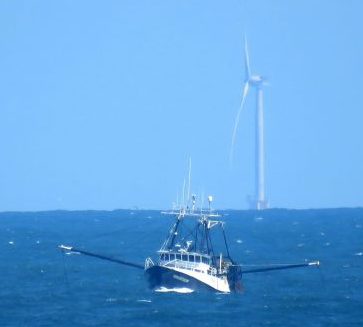
Developer: We won’t pursue wind farm in waters off Hamptons
The developer of one of the largest of three proposed wind farms contemplated for the waters off the Hamptons has withdrawn its tentative plan in favor of sites to the west, and is urging the federal government to restrict turbines from East End waters, according to the Germany-based developer’s top U.S. official.,, Bill White, managing director of East Wind LLC, a subsidiary of EnBW Energie Baden-Württemberg AG, said Friday the decision to withdraw and recommend against development off the Hamptons was primarily related to concerns about impacts on fishing. >click to read<10:08

Vineyard Wind dealt blows on two fronts: Edgartown commission rejects cables; feds delay EIS
… Meanwhile, federal officials have also put the project’s approval and overall timeline into jeopardy. According to a statement posted on Vineyard Wind’s website, the Bureau of Ocean Energy Management (BOEM) is not yet ready to issue a final environmental impact statement (EIS) for the project. A decision had been expected Friday to clear the way for construction to begin by the end of 2019 on the 84-turbine wind farm.,,, To this point, Vineyard Wind has cruised along beating out two other offshore wind projects with leases south of Martha’s Vineyard. But, more recently, the project has received considerably more pushback as the extent of the project became clear to fishermen and others. >click to read< 12:45

Maine Governor Mills signs wind bill, announces plans to advance offshore energy
Stalled efforts to test a floating wind farm off the Maine coast got back on track Wednesday after Gov. Janet Mills signed legislation directing the Public Utilities Commission to approve the contract for Maine Aqua Ventus, a first-of-its-kind wind project in the United States.,,, Mills also announced two collaborative efforts to put the state back in the game for offshore wind energy research.,,, Mills also announced that she will create the Maine Offshore Wind Initiative. The state-based program will identify opportunities for offshore wind development in the Gulf of Maine,,, will promote compatibility between potential future uses and existing uses, such as Maine’s commercial fishing and maritime industries. >click to read<08:27
Mills signs $8 billion budget, bills including Green New Deal, plastic bag ban – >click to read<
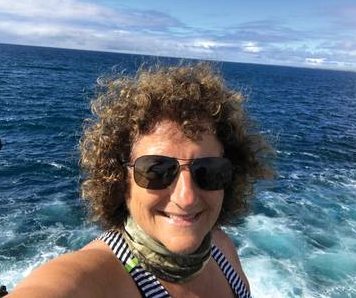
Offshore Wind: California’s New Gold Rush
When it comes to States promoting renewable, non-fossil electricity generation, California surely leads the list, from utility-scale regional grids to individual rooftop solar panels. In fact, a December 2018 update from the California Energy Commission (CEC) estimates the state may already have exceeded an initial renewable generation goal of 33% by 2020..,,, CA’s offshore process started in earnest three years ago when a wind energy company then called Trident Wind – now Castle Wind – submitted an unsolicited request to BOEM (Bureau of Ocean Energy Management) to lease a site in the Pacific near Morro Bay (about half-way between LA and San Francisco). >click to read<10:30

Deepwater pulls back, wind farm on hold
The wind turbine project planned off the coast of Montauk is dead in the water, at least for now. The Bureau of Ocean Energy Management confirmed this week that Deepwater Wind has asked the federal agency to halt its review of the project for the foreseeable future. Dubbed the South Fork Wind Farm, the 15-turbine project would be located in the Atlantic Ocean 35 miles east of Montauk. BOEM has confirmed in a missive that the “environmental review of the Deepwater Wind’s construction and operations plan (COP) is currently paused by request of Deepwater Wind.” The document on BOEM letterhead is signed by a BOEM official whose name has been redacted. However Stephen Boutwell, a spokesman for BOEM, confirmed the document’s accuracy Monday. >click to read<10:29
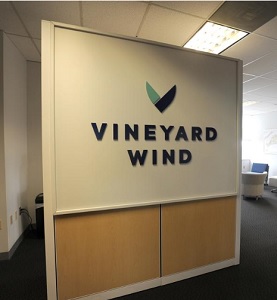
Massachusetts Fishermen’s Partnership says wind farm lacks scientific support
The Massachusetts Fishermen’s Partnership claims that the 84-turbine offshore wind project soon to be developed by Vineyard Wind lacks scientific backing and will inevitably harm the local ecology and way of life for fishermen and boaters. The release states that the growing wind energy industry is developing at a “rapid pace without adequate science and risk management.”Executive director of the Massachusetts Fishermen’s Partnership Angela Sanfilippo told The Times the partnership’s comments are based in part on the response of NOAA to the draft environmental impact statement released by the Bureau of Ocean Energy Management (BOEM).>click to read<20:38
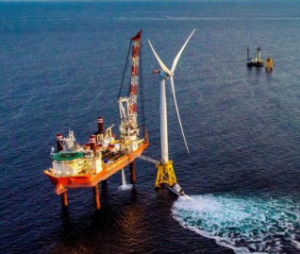
In Northeast, more research needed on offshore wind’s impact on fishing
As plans for wind farms across New England’s waters progress, fishermen continue to express concerns about the impact of the burgeoning offshore wind industry on their livelihoods. And while wind development is moving rapidly, (into your old fishing grounds) scientific research on the impacts on fisheries has struggled to keep up. But the tides may soon be turning, thanks to the collaborative efforts of the fishing industry, offshore wind developers, and government agencies. Last week, the Responsible Offshore Development Alliance announced a new initiative to advance regional research on fisheries and offshore wind called the Responsible Offshore Science Alliance. >click to read<15:52

President Trump Announces 12 Year Ban On Offshore Wind Power Development
April1st – Early this morning President Donald J. Trump announced a total moratorium on the
planning, development, and construction of offshore windmills for the next twelve years. The President
cited numerous reasons for his decision and declared “This part of the Green New Deal is dead, the only
thing green about offshore wind is the money being thrown around of which the taxpayers and
electricity users will be forced to pay back in excessive electric rates and subsidies.” By Boris Badenuff>click to read<21:15

NOAA, BOEM, Fishing Industry Sign New Memorandum of Understanding
NOAA Fisheries, the Bureau of Ocean Energy Management (BOEM), and the Responsible Offshore Development Alliance (RODA) signed a 10-year Memorandum of Understanding that brings local and regional fishing interests together with federal regulators to collaborate on the science and process of offshore wind energy development on the Atlantic Outer Continental Shelf. >click to read<12:52
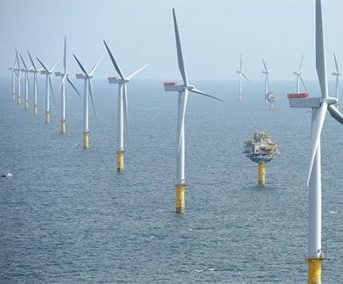
Windmills On The Best Fishing Grounds? Let’s stand up for our fishing resource, a nationally vital food supply.
First of all, why in the hell would anyone want to plant complex machinery, such as wind turbines, in an offshore marine environment in over 100 feet of water …if there were any alternative sites at all? It makes no sense. Only if, perhaps they are so repugnant that on land they will not be tolerated within sight of civilization. So put them “Safely out to sea” and out of sight! This push for offshore wind on the best fishing grounds is motivated by irresponsible and mindless greed! It is not cost effective, not a good long term business plan. And it is certainly not healthy for the ocean ecosystem, or for food security. >click to read<20:11

Vineyard Wind and R.I. strike bargain. R.I. Fishery Advisory Board chairman doesn’t like settlement. Nobody does.
“I just think it was a [expletive] deal for the industry, but it’s the deal that we got,” Newport, R.I. lobsterman Lanny Dellinger, chairman of the Rhode Island Fisheries Advisory Board, told The Times.
“I just don’t think the negotiations were set up fairly,” he said.,, Richard Fuka, Rhode Island Fishermen’s Alliance president, said squid fishermen, who comprise the most lucrative part of the Rhode Island fishing industry, weren’t represented on the board and were therefore cut out of negotiations. When asked if Vineyard Wind was aware squid fishermen may have not had a seat at the table for negotiations, Vineyard Wind spokesman Scott Farmelant declined to talk about any part of the deal and referred The Times to the Vineyard Wind release. >click to read<16:20
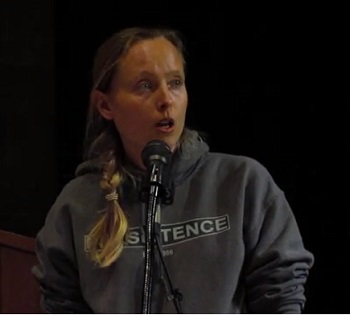
Rhode Island Approves Vineyard Wind Project, but, the fishing industry sure don’t like it.
The offer to compensate Rhode Island fishermen harmed by the latest offshore wind project was disliked by just about everyone in the packed auditorium, but the deal was ultimately approved for fear it might slip away. “We’ve been backed into a corner. Is there a way out of it? No,” said Grant Moore, fisherman and president of the Atlantic Offshore Lobstermen’s Association.,, Meghan Lapp from fish processor Seafreeze Ltd. of North Kingstown and Point Judith submitted a petition signed by 170 workers in the commercial fishing industry who oppose the compensation plan. Various video’s, >click to read<13:54

Fishing industry could be endangered by planned wind turbines
Whatever the future for large scale off-shore wind farms in New England, New Bedford and its first in the nation fishing industry will feel the effects. Renewable energy from sources which include off-shore wind, are an undeniable part of our future. It’s a fair question though whether commercial fishing as it now exists in southern New England, will survive the installation of the largest and most extensive array of ocean based wind turbines in the world. The offshore wind lease areas in federal waters overlay some important fishing grounds and navigation transit areas for the commercial fishing fleet which sails from our coast. The project furthest along in the leasing process is being pursued by Vineyard Wind,,, >click to read<21:41
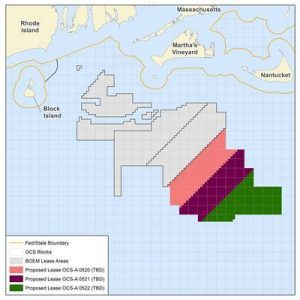
Europeans Sweep Record US Offshore Wind Auction
A U.S. government auction for three wind leases off the coast of Massachusetts ended on Friday with record-setting bids totaling more than $400 million from European energy giants including Royal Dutch Shell Plc and Equinor ASA. The Bureau of Ocean Energy Management (BOEM) announced the sale’s three winners – Equinor Wind US LLC, Mayflower Wind Energy LLC, and Vineyard Wind LLC, at the conclusion of the two-day sale that attracted 11 bidders and lasted 32 rounds. Mayflower is a joint venture owned by Shell and EDP Renewables, a division of Portugal’s EDP. Vineyard Wind is a joint venture between Copenhagen Infrastructure Partners and Avangrid Inc, a division of Spain’s Iberdrola SA. Equinor is the Norwegian company formerly known as Statoil. Equinor and Mayflower each bid $135 million for their leases, while Vineyard Wind bid $135.1 million, BOEM said. >click to read<21:57
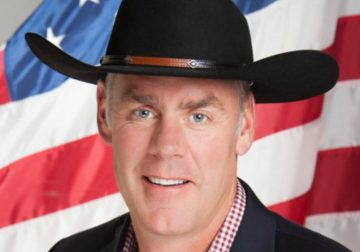
Offshore wind developers ante up at auction of leases near Block Island
In what is sure to be seen as an affirmation of their industry’s prospects, a scrum of offshore wind developers is poised to pay an unprecedented amount of money for the latest set of leases being auctioned off in federal ocean waters near Rhode Island and Massachusetts. When the federal Bureau of Ocean Energy Management suspended its auction Thursday night for the three leases located in waters about 51 miles southeast of Block Island, the bids for each had reached between $91 million and $101 million — more than twice the highest amount paid in the past for an offshore wind lease in the United States and a range that compares favorably to payments for oil and gas projects. The bureau, part of the U.S. Department of the Interior, described the day as “historic.” In a tweet, Interior Secretary Ryan Zinke said, “We have something big going on off the coast of Massachusetts.” >click to read<10:13

Working Group Nears Consensus on Transit Lanes for Fishing Vessels in Northeast Wind Energy Areas
Fishing industry representatives, offshore wind developer lease-holders, the National Marine Fisheries Service, the Bureau of Ocean Energy Management, and the U.S. Coast Guard, among others, joined RODA to continue an attempt to develop fishery transit lanes through the large group of Wind Energy Areas in federal waters off of Massachusetts and Rhode Island. The meeting was facilitated by the Consensus Building Institute. In addition to loss of access within the lease areas, commercial fishermen have concerns about their ability to safely travel across wind energy arrays to access other historical, traditional commercial fishing grounds. >click to read<21:26

BOEM elaborates on map for New York Bight areas for offshore wind
Walter Cruickshank, the acting director of the Bureau of Ocean Energy Management, provided some details to an otherwise ambiguous map the agency released last week for potential offshore wind sites along the New York Bight Call area. The map featured four sections of land off the coasts of Long Island and New Jersey and included shaded areas deemed as “primary recommendations” and “secondary recommendations.” The labels left commissioners at the Port Authority confused. >click to read<13:43






